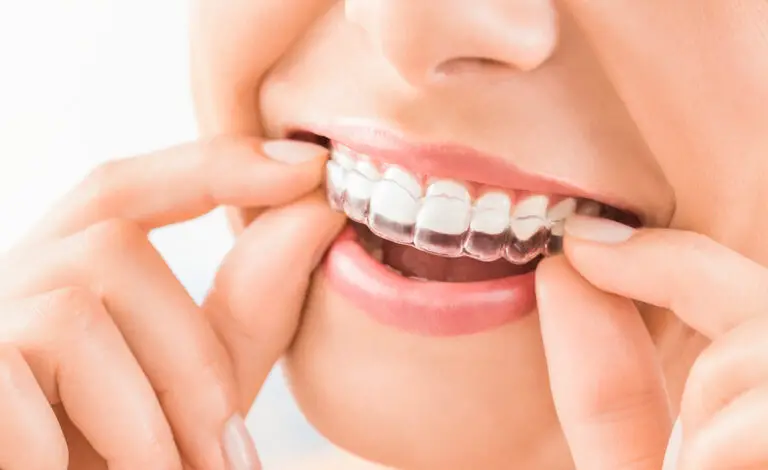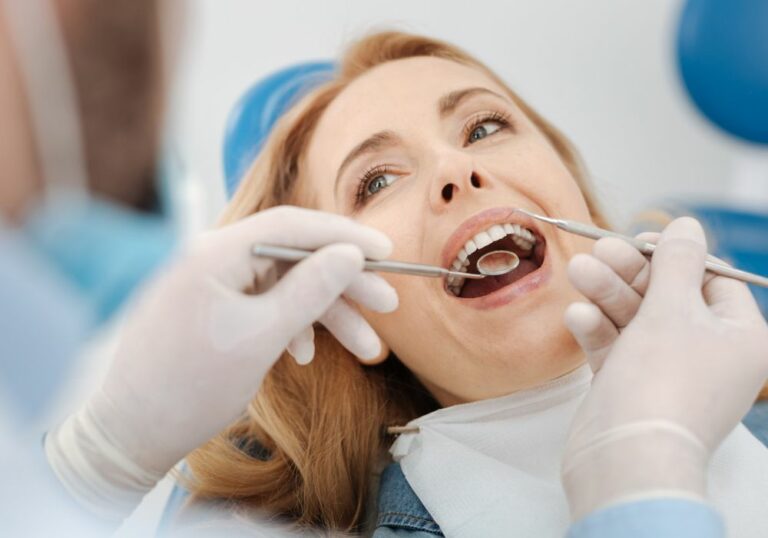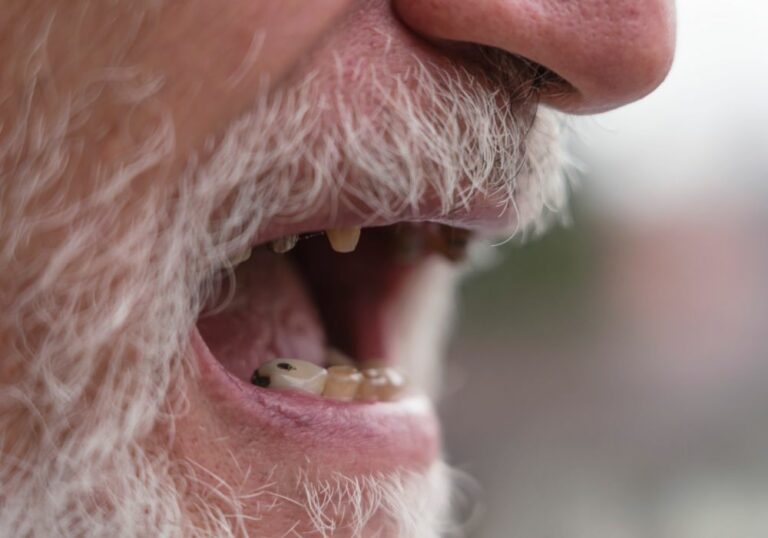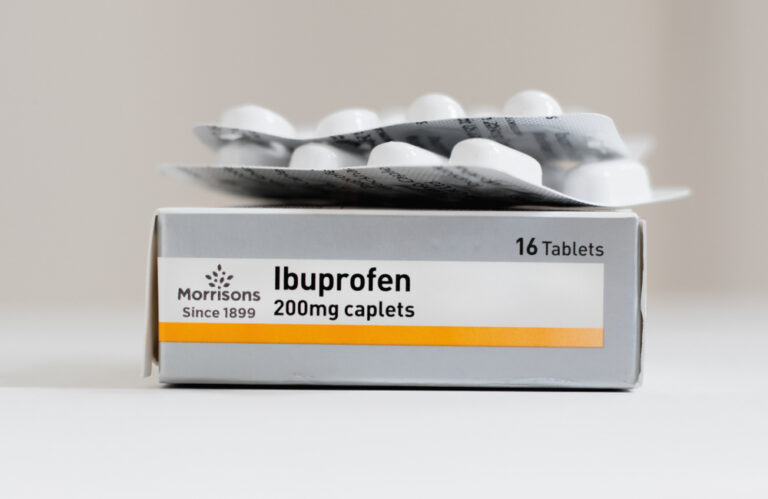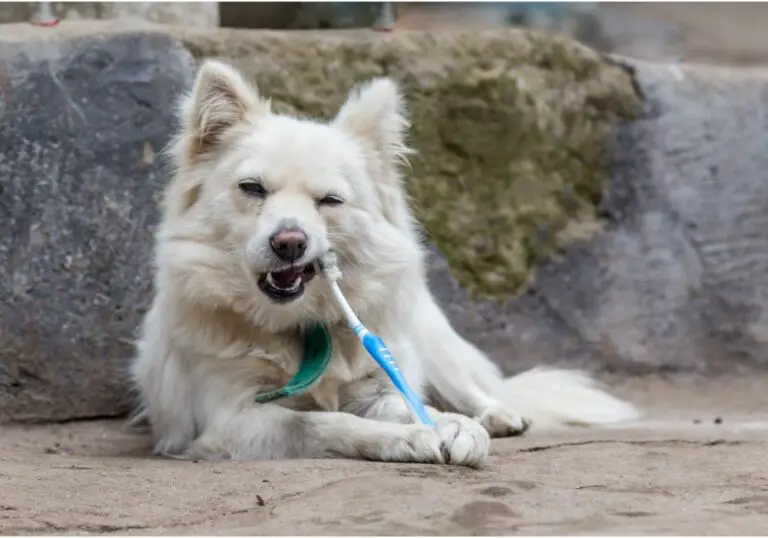After years of dutifully brushing my teeth morning and night with a pea-sized amount of toothpaste, I made the decision to stop using toothpaste altogether. I know this sounds crazy, but hear me out. I had my reasons for giving up this bathroom staple that most people use twice a day without thinking twice.
In this article, I’ll discuss what originally made me start questioning my toothpaste habit, the extensive research I did to learn about the ingredients in conventional toothpastes, the potential harm some of those ingredients can cause, and the natural alternatives I thoroughly researched and switched to instead. I know going toothpaste-free is an extremely unconventional decision, but I truly believe it’s the right choice for me and my oral health after much careful consideration. I hope by the end of this in-depth article you’ll fully understand why I stopped using toothpaste.
Dental Health Journey
I’ve always tried to take exceptional care of my teeth. I never had any cavities growing up and thought I was doing everything right with my daily toothpaste usage. But when I reached my late 20s, I suddenly started having some dental issues – a couple small cavities, receding gums around a few teeth, and increased sensitivity to hot and cold foods and drinks. I was perplexed why these problems cropped up out of nowhere when I had been so diligent with oral hygiene my whole life.
This led me down a months-long path of extensive research and discovery about the ingredients in conventional toothpastes, whether they’re truly good for your teeth and gums, and if there are healthier natural alternatives without harsh chemicals. I read dozens of dental studies, scoured ingredient labels, and consulted with several holistic dentists to get their take. I was shocked to learn how many concerning synthetic chemicals and additives are in most big-brand toothpastes that you ingest daily. After much careful consideration, I decided to try eliminating toothpaste from my routine for 6 months to see if it made a positive difference in my dental health.
Potential Harmful Ingredients in Toothpaste
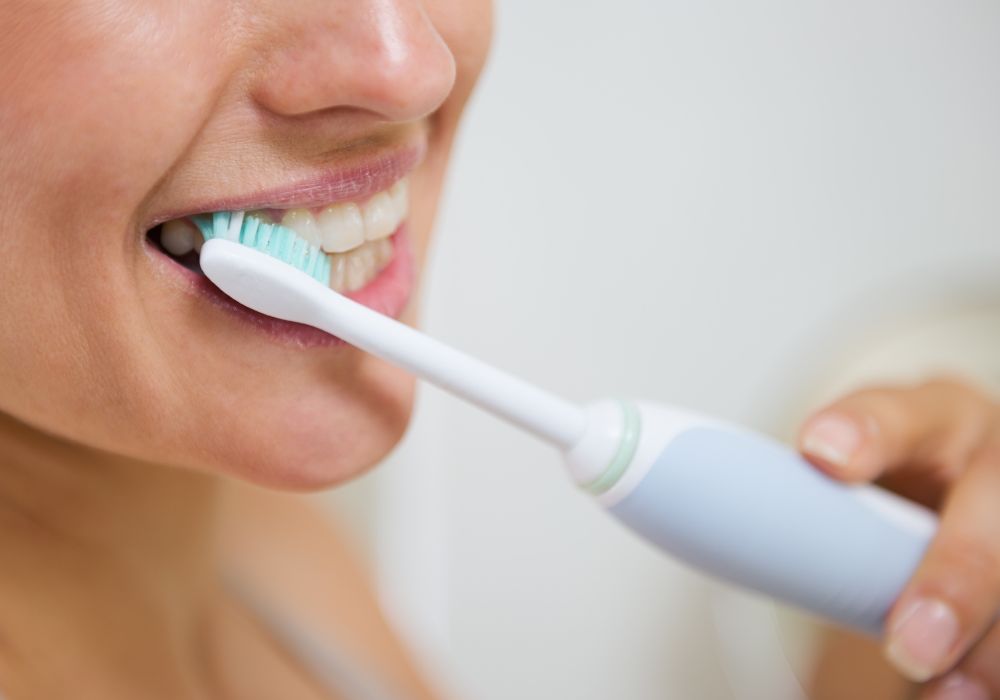
Here are some of the most concerning ingredients commonly found in toothpaste along with research on their potential health risks:
1. Sodium Lauryl Sulfate (SLS)
This detergent agent causes foaming and delivers flavor. But SLS is known to erode tooth enamel, and studies show it can increase mouth ulcerations and canker sores for sensitive individuals. The research is mixed, but some links SLS to skin, eye, and respiratory irritation with long-term use. It can also disrupt the natural oral bacteria balance.
2. Artificial Colors & Flavors
Toothpastes contain FD&C coloring agents like blue 1 and 2 or titanium dioxide for brightness. These dyes are derived from petroleum and coal tar sources. Studies show artificial coloring is linked to tumors and kidney damage in lab animals. Artificial flavors also contain chemicals that accumulate in the body over time.
3. Triclosan
An antimicrobial chemical added to fight gingivitis and plaque. But research shows it alters hormone regulation, can create antibiotic resistant bacteria, and is associated with infertility and endocrine disruption. The FDA banned triclosan from soaps and body washes in 2016 due to health concerns.
4. Fluoride
Added to reduce cavities, fluoride hardens tooth enamel. But too much fluoride while teeth are developing can cause dental fluorosis with white spots, streaks or pitting. Many countries have lowered recommendations for fluoride levels allowed in drinking water due to safety concerns and excess fluoride consumption from toothpaste.
5. Propylene Glycol
A moisturizing agent, but propylene glycol may be contaminated with carcinogenic compounds like ethylene oxide during production. It can irritate eyes, skin, and respiratory function in animal studies. The EPA has warned about toxic byproducts from broken down propylene glycol in plastics.
6. Carrageenan
A thickening and binding agent derived from seaweed. Studies link food-grade carrageenan to intestinal inflammation, colon cancer, and glucose intolerance in animal testing. The WHO removed carrageenan from its safe food additive list in 2016 over concerns that it may promote tumors.
7. Microbeads
Added for color, texture, and a scrubbing effect. But the tiny plastic microbeads escape water filtration and accumulate in waterways and oceans. They absorb toxins and contaminate the food chain, harming fish and wildlife. Microbeads have now been banned from toiletries in many countries due to this environmental damage.
8. Parabens
Anti-microbial preservatives like methylparaben and propylparaben are classified as endocrine disruptors by the EU and may interfere with normal hormone function in the body according to studies. Parabens mimic estrogen and have been detected in breast cancer tumors.
My Natural Toothpaste Alternatives – What I Switched To and Why
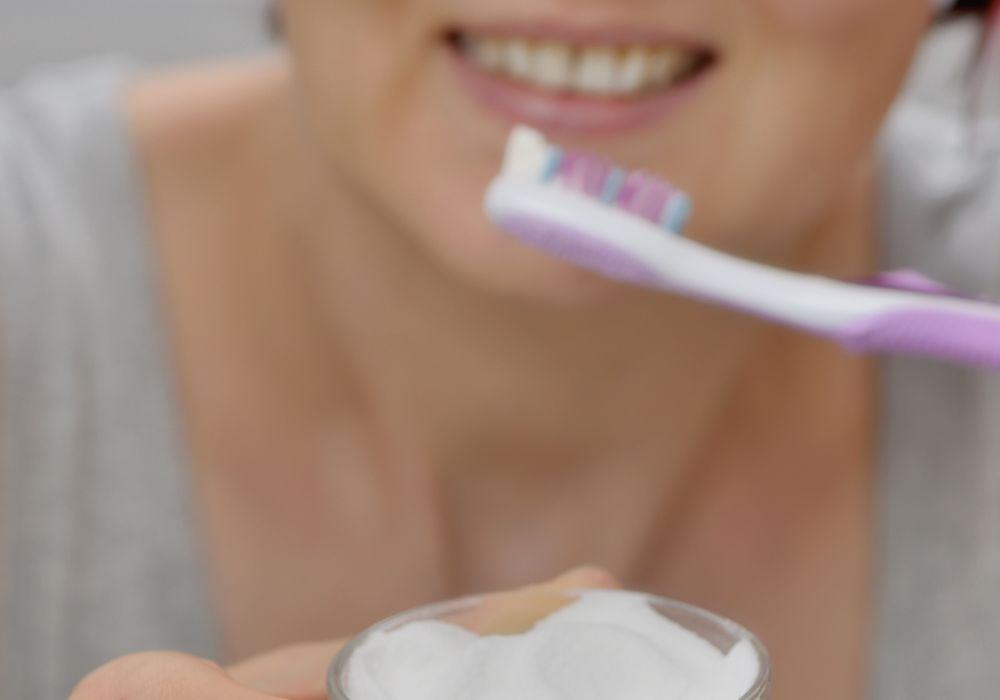
Once I learned about the concerning health effects of many ingredients in conventional toothpaste, I transitioned to using natural alternatives without all those questionable synthetic chemicals. Here are the natural tooth care products I use now along with the reasoning behind each one:
1. Baking Soda
Baking soda is a mildly abrasive powder that can effectively yet gently clean teeth without damaging enamel like some detergents. It neutralizes the acids in your mouth and provides whitening benefits without harsh bleaches. I simply sprinkle a pinch of baking soda onto my toothbrush instead of commercial toothpaste.
2. Coconut Oil
Organic virgin coconut oil contains lauric acid, which has natural antiviral, antifungal, and antibacterial properties to reduce cavity-causing bacteria in the mouth. I use coconut oil for a technique called oil pulling, where you swish a tablespoon around your mouth for 15-20 minutes then spit it out. This has an detoxifying effect, reduces plaque, and freshens breath.
3. Hydrogen Peroxide
As a mild antiseptic, hydrogen peroxide helps reduce plaque that leads to gingivitis. It naturally whitens teeth by removing surface stains. I use it sparingly once a week diluted with water as a gargling mouthwash. Too much hydrogen peroxide can irritate gums, so moderation is key.
4. Xylitol
Xylitol is a natural sugar alcohol sweetener with antibacterial benefits for teeth. It’s non-fermentable, meaning it won’t feed the bacteria that causes tooth decay. I look for oral care products that contain xylitol instead of saccharin or aspartame. Be aware that xylitol is extremely toxic to dogs.
5. Tea Tree & Peppermint Essential Oils
Tea tree oil has been shown in studies to be more effective against plaque bacteria than chlorhexidine, a dental disinfectant. Peppermint oil has anti-inflammatory benefits that help freshen breath. I add a drop of each essential oil to coconut oil that I use for oil pulling.
6. Activated Charcoal
Activated charcoal derived from coconut shells has absorbent properties that draw toxins, bacteria, and external stains off teeth to naturally whiten them. I use a fine charcoal powder mixed with water as a whitening mouth rinse a couple times per month, being careful not to scrub too hard.
7. Neem Sticks
Chewing sticks from the neem tree have been used for oral hygiene in India for thousands of years. Neem has antibacterial, anti-cavity, and anti-plaque properties. I occasionally chew a neem stick instead of using a toothbrush. The frayed end softens and freshens the teeth and gums.
So those are the thoroughly researched natural options I’ve switched to instead of commercial toothpaste with synthetic ingredients. My teeth have never felt cleaner since making the change to these natural alternatives.
Comparison of Conventional vs. Natural Toothpaste Ingredients
| Conventional Toothpaste | Natural Toothpaste Alternatives |
|---|---|
| SLS detergent | Baking soda mild abrasive |
| Artificial dyes | Coconut oil has antimicrobial benefits |
| Triclosan alters hormones | Hydrogen peroxide whitens naturally |
| Fluoride can cause fluorosis | Xylitol sweetener is antibacterial |
| Propylene glycol irritant | Essential oils fight bacteria and inflammation |
| Carrageenan inflammation | Charcoal pulls toxins and whitens |
| Plastic microbeads | Neem chewing sticks clean and freshen |
The Benefits I’ve Experienced Without Toothpaste

Since eliminating conventional toothpaste containing synthetic ingredients from my daily oral care routine, here are some of the improvements I’ve noticed over the past 6 months:
- My teeth feel ultra clean and smooth without the residue or film left by detergents like SLS. The baking soda gives a squeaky clean feeling without abrasives that wear down enamel.
- My gums have firmed up and reattached more tightly around my teeth. They no longer bleed when I floss since switching to natural antibacterial rinses.
- I have significantly less plaque buildup since oil pulling with coconut oil compared to when I used regular toothpaste twice a day. My hygienist has noticed less scraping is needed at my cleanings.
- I haven’t had a single canker sore or mouth irritation since eliminating irritants like SLS and fluoride found in conventional toothpaste. This is a huge improvement in mouth comfort.
- My teeth are visibly whiter from natural whiteners like hydrogen peroxide, charcoal, and coconut oil pulling. I’ve been able to avoid harsh chemical bleaches.
- I have much less tooth sensitivity to hot and cold. My enamel seems stronger without abrasive additives that wear it down over time.
- My breath stays incredibly fresh for hours after brushing with antibacterial oils instead of artificial mint flavors. No more embarrassing midday bad breath.
- I’ve saved money on toothpaste costs and plastic waste from tubes. A container of baking soda lasts over a year, and the oils and peroxide come in glass bottles that can be reused.
So in every aspect, my oral health and comfort has noticeably improved since I stopped using regular toothpaste with synthetic ingredients and adopted natural alternatives. While it took some adjustment initially, I’m really thrilled with the results I’ve seen so far.
Addressing Concerns and Common Questions
I know giving up conventional toothpaste is highly unusual, so people understandably have many questions and concerns when I tell them I made the switch. Here I’ll address some of the common FAQs:
Q: Aren’t you worried about getting cavities or plaque buildup without fluoride toothpaste?
A: I was concerned at first. But coconut oil, antimicrobial essential oils, xylitol, hydrogen peroxide, and neem have natural antibacterial elements that help prevent cavities and plaque while keeping the mouth clean and fresh tasting without fluoride. As long as I maintain proper oral hygiene habits, my dentist sees no issues.
Q: Doesn’t your mouth feel gross without that cooling, tingly minty feeling you get from toothpaste?
A: I’ll admit it felt weird initially, but I quickly got used to it. The refreshing and cleansing sensation from the baking soda, coconut oil, and antibacterial essential oils provides a similar cooling effect and fresh feeling without synthetic chemicals.
Q: What did your dentist say when you told them you stopped using standard toothpaste?
A: At first they were skeptical and questioned my decision. But after 6 months, even my dentist was amazed at how healthy my teeth and gums look compared to before. While unconventional, they are fully supportive of my natural tooth care routine as long as I keep up with my checkups and cleanings.
Q: Without special whitening toothpastes, do you find your teeth get stained or yellow over time?
A: I was worried about this initially. But the hydrogen peroxide, activated charcoal, and coconut oil pulling provide a natural yet effective way to gently whiten teeth and keep stains away. Avoiding staining foods like coffee, tea, and red wine also helps.
Q: Coconut oil has calories and fat, so isn’t swishing it around your mouth unhealthy for teeth?
A: I’m careful to use just enough coconut oil to cover the inside of my mouth and swish vigorously for 15-20 minutes. This maximizes the benefits while minimizing any oil that gets swallowed. Studies show coconut oil pulling is highly beneficial and not harmful for teeth when done correctly.
Conclusion
While unconventional, my experience quitting conventional toothpaste has been extremely positive so far. After much careful research, I plan to stick with using natural oral care ingredients like baking soda, coconut oil, essential oils, hydrogen peroxide, and activated charcoal going forward. My teeth, gums, and mouth feel healthier than ever after making the switch away from synthetic ingredients. Of course, consult your own dentist before making major changes to your dental hygiene routine. But for me, the dental and health benefits of going natural far outweigh the cons. I hope this thorough article helped explain my reasons, research, and positive results from stopping toothpaste use. Please let me know if you have any other questions!

